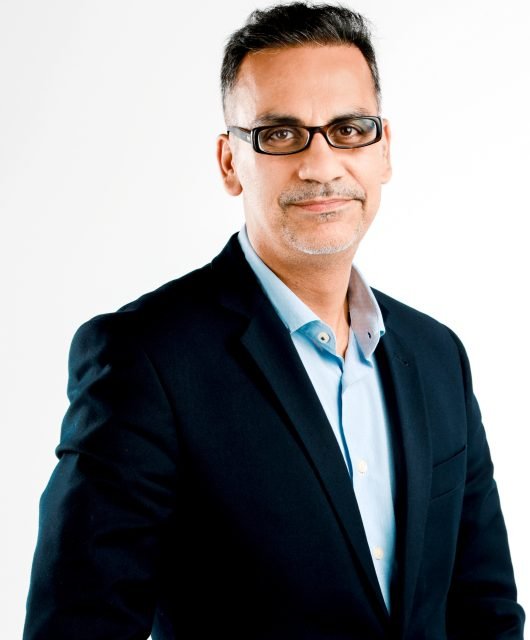Predictive Trends for MENA’s Communications Industry in 2023, By Mai El Kinawi
By: Mai El Kinawi, Corporate Communications Strategist, Co-Founder of True North Consulting

Over the past two years, organizations have had to flex very different communication muscles, versus what they were accustomed to, in years past. The changing landscape of the work environment, the increasing demand for customers’ attention, the reduction in their time and their span of attention, reshaped organizations’ communication strategies irreversibly. Coupled with a constantly changing technology landscape, leaders, communicators and brands had to adapt their messages, both to cut through the clutter and be heard, as well as sharpen their messages to ensure they result in the desired response.
As we bring 2022 to a close, we carry with us some of these practices into 2023. Here are some important trends that we should consider as we plan our content communication plans for 2023:
- Keep your internal stakeholders informed & engaged
For any, and all organizations, the internal stakeholder – the employee – should be at the top of their strategic communication agenda. Change, uncertainty and instability, have marked our past two years, resulting in a greater need to keep your employees informed and engaged. Not only with the objective of keeping them motivated, and managing their performance; but more importantly because they are and will continue to be, your organization’s biggest and strongest ambassadors… if you allow them to!
Never has it been more pertinent to engage in frequent, timely and authentic dialogue with your employees about strategic priorities, flow of business and challenges that would only be resolved, with collective action. If you don’t engage your employees, don’t expect them to engage your customers.
- Multi-purpose your content
“Content is King”. It continues to be king. But, how and where you share that content is increasingly important.
As communication professionals, content is the starting point. One single piece of content should be morphed, shaped and formed to match multiple channels and platforms. Its aim is to reach your diverse portfolio of stakeholders, where they consume content and how they consume content. It must speak to them, leveraging their interests, their voice and their view-points, making your product / service / message relevant to them; ie. It must be tailored. Adopting a ‘mix & match’ mindset to different forms of content will yield positive results and higher consumption of your message. (e.g. a press release with an infographic).
- Video & Audio content will continue to be on-demand
Time continues to be a finite resource, shaping people’s lifestyle and fueling their shorter attention spans. This paved the way (over the past few years) for video and audio content to flourish and grow. Content is expected to inform, entertain and engage its viewers. Video and audio content seem to have the winning formula to do just that. According to Spiceworks, statistics show that 55% of people watch videos online every day, and social media videos generate up to 1200% more shares than texts and images combined. And these figures are on the rise.
This trend will carry on with us into 2023 and beyond.
- Social Media is an integral part of a successful communication strategy
Social Media, with all its platforms is by far proving to be the ‘medium of choice’ for information. It can no longer be a separate channel of communication in your communication plan. And it certainly doesn’t respond to a ‘one size fits all’ solution. Today, and going forward, it will continue to be the platform of choice for content consumption. Having a carefully thought-out strategy for the various platforms you intend to activate is an integral pillar of any successful communication strategy.
Social Media platforms are increasingly playing a crucial role in brand perception, reputation and even crisis management and mitigation. It owns the magical formula of two-way content, engagement and call to action.
- Data-science to power communication strategies
Data-science is quickly proving to be a powerful ‘secret weapon’ to have in your communication portfolio. We all know “what can’t be measured, can’t be measured” and would have questionable impact. Today, thanks to the advancing technologies, there is no shortage of access to data and measurement tools. However, how you read this data and what you do with it, is what will differentiate the good from the great.
More often than not, organizations fall on two sides of the spectrum when it comes to data-analytics. On the one end, some organizations have anemic levels of data in relation to their communication plans, while on the other end, they have too much and don’t know what to do with it. Communication professionals should find the right amount of data (and the right data providers) that can provide them with the specific data that they can generate insights that drive and shapes their communication agendas, and their business results.
- Relevance and Authenticity
The final trend relates to relevance and authenticity. With the massive amount of information, in all its formats and on all platforms, that a single person is subjected to, cutting through the clutter, is a constant challenge and opportunity, for communicators. Ensuring your relevance to your audience and authenticity of your message to your stakeholders, should always be your true north when shaping your communication strategies.
Authenticity is about having the ability to back up any claims that your organization or brand makes, especially when it comes to leverage key words such as “sustainable”, “diversity and inclusion” and “flexible workplaces”. Studies show that our new audience groups, Millennials and GenZ, are more critical to generic claims and demand proof points to believe them.
Relevance relates to topics that your target audience deem important. Knowing your target audience in-depth, understanding their needs and wants, and speaking in their own language will increase the impact of your message, the retention of the information and their engagement with you and what you are offering. It is all about connecting with your stakeholder.
This is an exciting time for the communication industry. To survive, nay to prosper, we must continue to evolve and keep up with the changing stakeholder preferences and advancing technologies. Adopting a more holistic approach to communications, embracing technology as an enabler and adopting a planned flexibility to our strategies, are essential differentiators for successful content communications plans.





